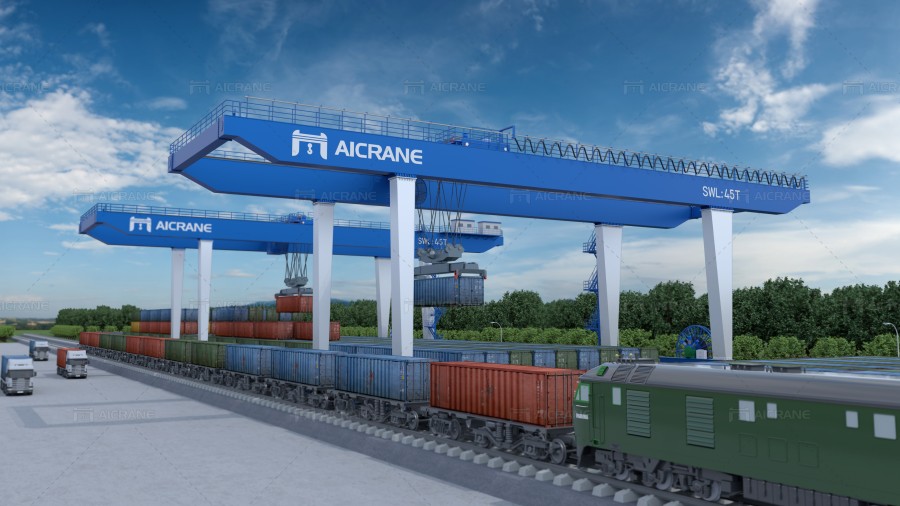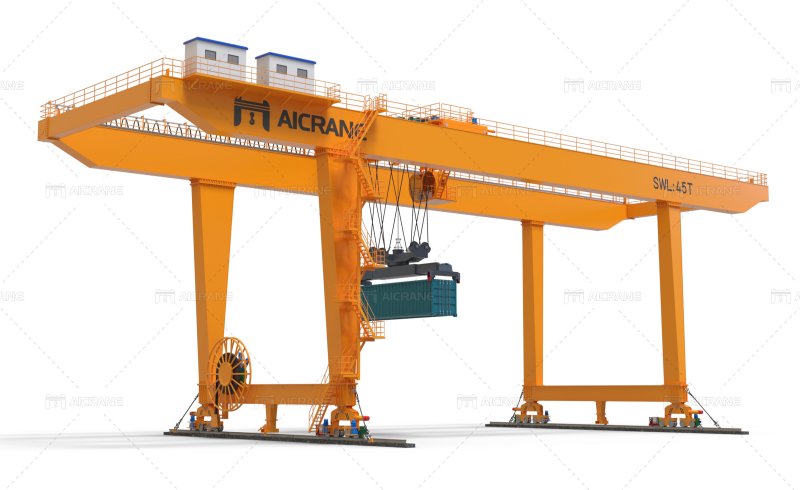In the bustling world of maritime trade, the role of container gantry cranes has become synonymous with efficiency and precision. These towering giants are the backbone of port logistics, revolutionizing cargo handling with their advanced technology. This article delves into the power and precision of container gantry crane technology, exploring how these engineering marvels have transformed the landscape of global trade.
The Evolution of Container Gantry Crane Technology
Container gantry cranes have undergone a remarkable evolution, adapting to the ever-growing demands of the shipping industry. Initially designed for straightforward cargo lifting, modern gantry cranes have become sophisticated machines, integrating cutting-edge technology to enhance their capabilities.

Advanced Automation
One of the defining features of contemporary container gantry cranes is their advanced level of automation. Automated stacking and retrieval systems, coupled with precise container positioning, reduce human intervention and significantly speed up cargo operations. The seamless integration of automation ensures not only efficiency but also safety in port environments.
Telescopic Spreaders
The introduction of telescopic spreaders has been a game-changer in container handling. These specialized attachments allow for the simultaneous lifting of multiple containers, optimizing the crane’s capacity and reducing loading and unloading times. The precision with which telescopic spreaders can handle various container sizes contributes to the adaptability of gantry cranes. Container handling cranes are generally adopt double beam gantry crane type to suit specific needs.
Real-time Monitoring and Control
Container gantry cranes are equipped with state-of-the-art monitoring and control systems. Operators can remotely monitor the crane’s performance, track container movements, and respond to real-time challenges. This level of control not only enhances efficiency but also allows for quick adjustments to changing operational requirements.

Powerful Performance Factors
Lifting Capacity
The primary function of a container gantry crane is lifting and moving containers with varying weights. The power of these cranes lies in their impressive lifting capacities, often ranging from 20 to 70 tons or more. This capability enables the efficient handling of containers from the largest vessels, contributing to port versatility.
Speed and Productivity
Time is of the essence in maritime trade, and container gantry cranes are designed for speed and productivity. Their ability to swiftly load and unload containers directly impacts the turnaround time of vessels in ports. The faster the operations, the more efficient the port becomes in facilitating global trade.
Adaptability to Different Container Sizes
With the variety of container sizes used in shipping, adaptability is a key performance factor. Container gantry cranes are designed to handle standard 20-foot, 40-foot, and even larger containers. The flexibility to work with different container sizes ensures that these gantry lifting cranes can accommodate the diverse cargo arriving at ports.
Environmental Considerations
In addition to their power and precision, modern container gantry cranes are increasingly designed with environmental sustainability in mind. Electric and hybrid models help reduce carbon emissions, making them more eco-friendly options for ports aiming to minimize their environmental impact.
Conclusion
The power and precision of container gantry crane technology have transformed port operations, enabling the efficient movement of goods on a global scale. As these engineering marvels continue to evolve, the marriage of advanced automation, powerful lifting capabilities, and environmental consciousness will shape the future of maritime trade. Container gantry cranes solutions stand tall as symbols of progress in the world of logistics, driving efficiency, and contributing to the seamless flow of goods across the seas.
